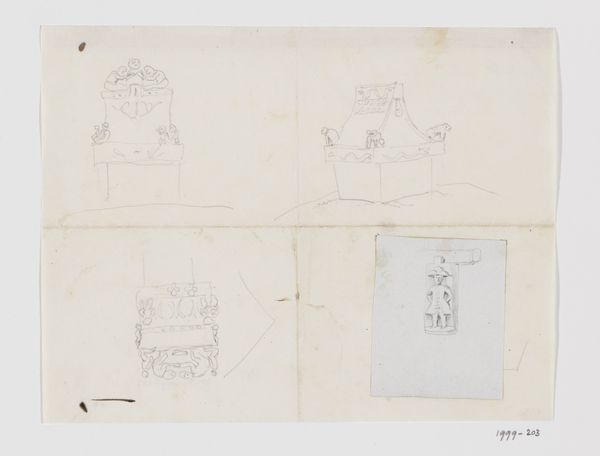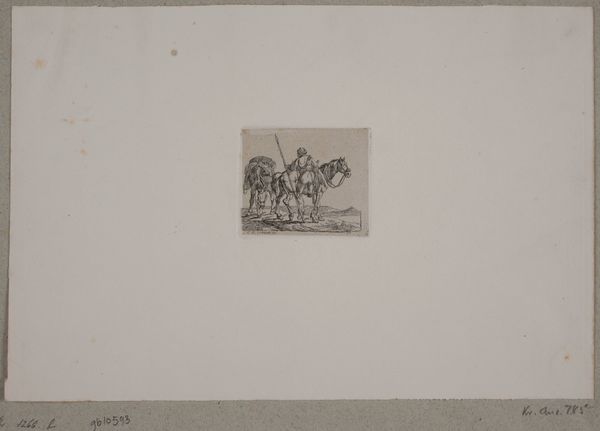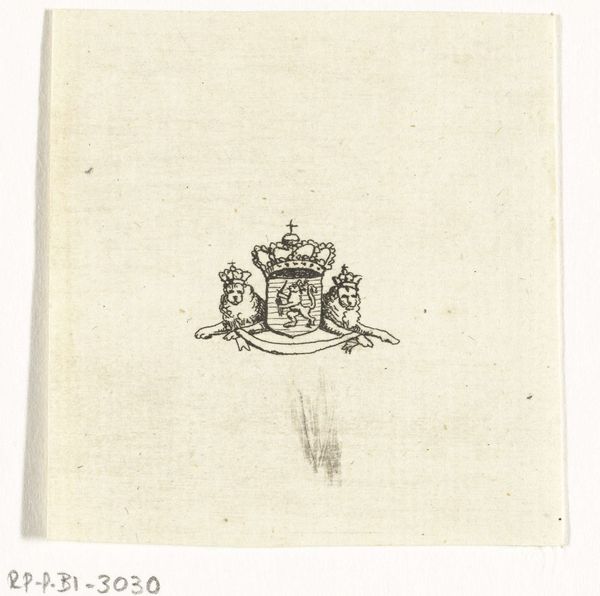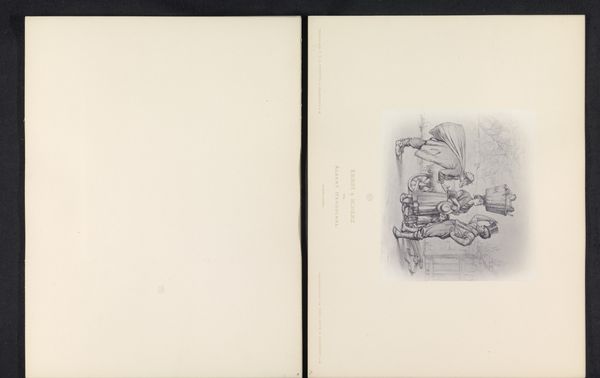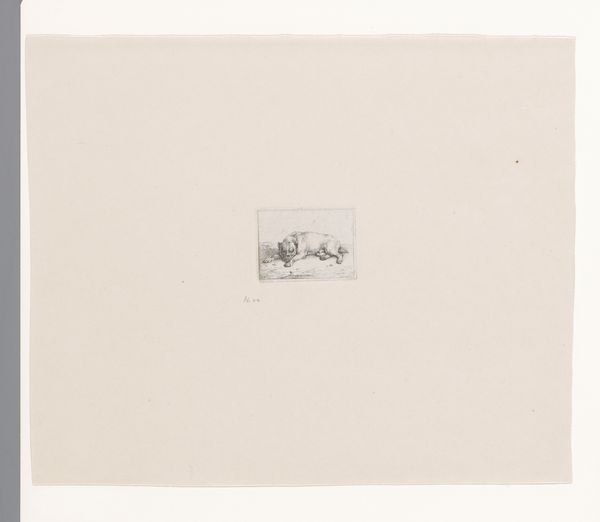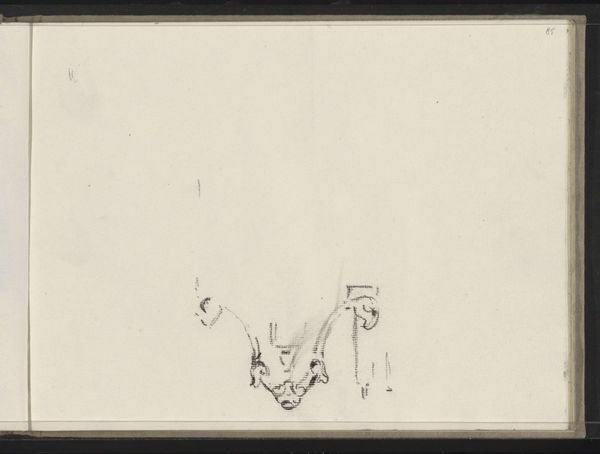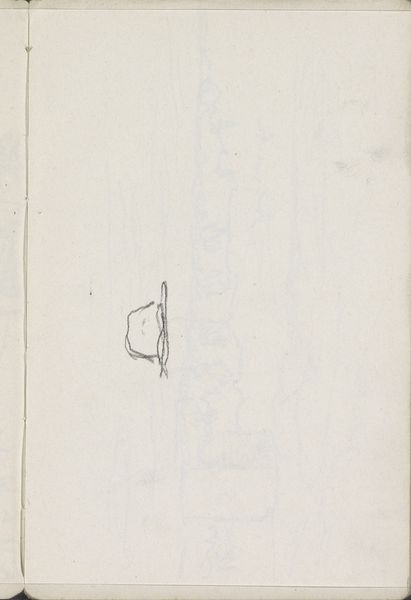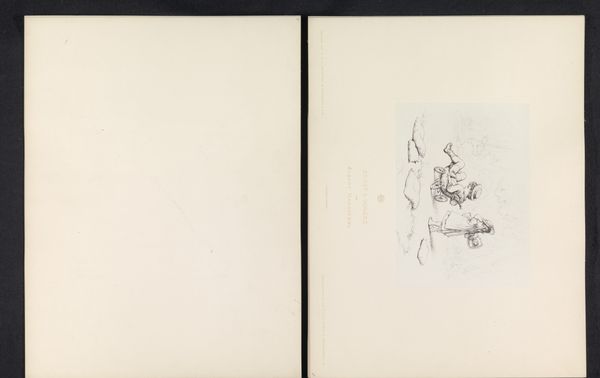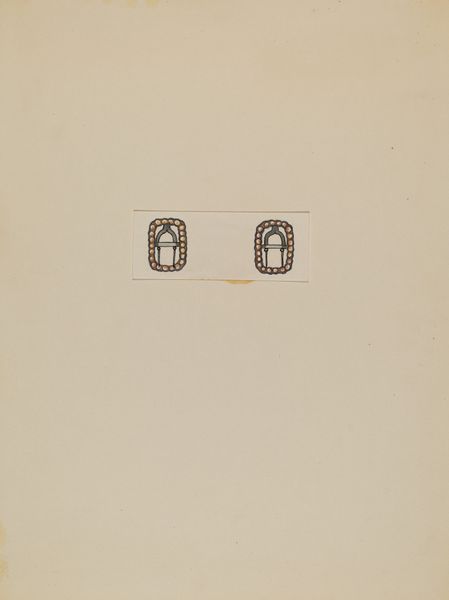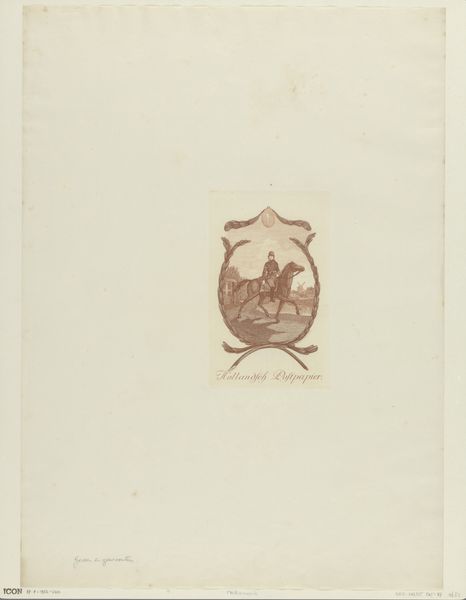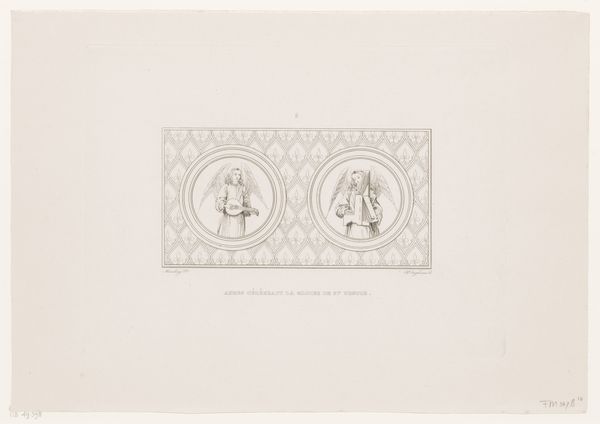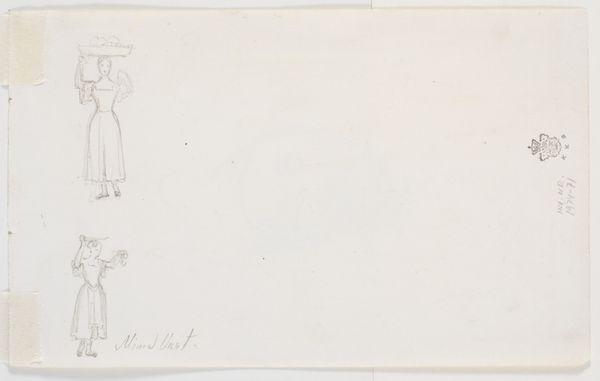
drawing, print, etching, paper, ink, engraving
#
drawing
#
narrative-art
# print
#
etching
#
etching
#
figuration
#
paper
#
ink
#
engraving
Dimensions: 45 mm (height) x 64 mm (width) (plademaal)
Editor: This is “Så lunka vi så småningom,” created between 1871 and 1875 by G.V. Blom. It looks like an etching and engraving on paper. The image is small, but what immediately strikes me is the contrast between the figures – a playful dance involving a skeleton. What do you see in this piece? Curator: I see a potent allegory of life's journey. The skeleton, of course, is a traditional *memento mori*, a reminder of our mortality. But here, it's not a grim reaper; it is dancing along with the living, suggesting a different relationship to death. Notice how it mirrors the movements of the other figures. Death is part of the dance. Editor: That's a beautiful way to put it. I initially saw the skeleton as something macabre, but your perspective makes me reconsider its role in the composition. Does the title offer more insight? Curator: It does indeed. “Så lunka vi så småningom” translates to "So we trudge along slowly". The artist isn’t simply representing death but the slow, inevitable march towards it. This etching, therefore, uses visual symbolism to remind viewers of the continuous relationship of existence to non-existence. Are there any familiar motifs this imagery brings to mind? Editor: Well, now that you mention it, it has elements of a medieval Danse Macabre. It does give me the shivers! Curator: Exactly! It echoes that tradition while perhaps making it more intimate, domestic even. A reflection on the transience that everyone must confront. Editor: Thank you; I now feel more perceptive of the interconnected ideas relating to cultural and historical contexts of life, death, and imagery behind the art. Curator: It’s wonderful to consider how art lets us explore the imagery behind emotions and philosophy to find out how the past relates to us and continues to relate to us.
Comments
No comments
Be the first to comment and join the conversation on the ultimate creative platform.
